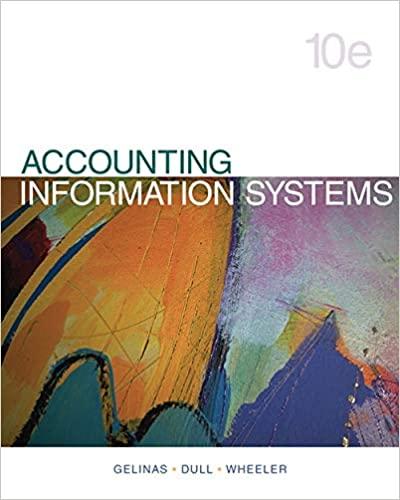



Factor Company is planning to add a new product to its line. To manufacture this product, the company needs to buy a new machine at a $483,000 cost with an expected four-year life and a $19,000 salvage value. Additional annual information for this new product line follows. (PV of $1, FV of $1, PVA of $1, and FVA of $1) (Use appropriate factor(s) from the tables provided.) $ 1,990,000 Sales of new product Expenses Materials, labor, and overhead (except depreciation) Depreciation Machinery Selling, general, and administrative expenses 1,478,000 116,000 156,000 Required: 1. Determine income and net cash flow for each year of this machine's life. 2. Compute this machine's payback period, assuming that cash flows occur evenly throughout each year. 3. Compute net present value for this machine using a discount rate of 6%. Complete this question by entering your answers in the tabs below. Required 1 Required 2 Required 3 Determine income and net cash flow for each year of this machine's life. Expected Income Revenues Expenses Expected Net Cash Flow 0 Net cash flow Required 1 Required 2 > Factor Company is planning to add a new product to its line. To manufacture this product, the company needs to buy a new machine at a $483,000 cost with an expected four-year life and a $19,000 salvage value. Additional annual information for this new product line follows. (PV of $1, FV of $1, PVA of $1, and FVA of $1) (Use appropriate factor(s) from the tables provided.) $ 1,990,000 Sales of new product Expenses Materials, labor, and overhead (except depreciation) Depreciation-Machinery Selling, general, and administrative expenses 1,478,000 116,000 156,000 Required: 1. Determine income and net cash flow for each year of this machine's life. 2. Compute this machine's payback period, assuming that cash flows occur evenly throughout each year. 3. Compute net present value for this machine using a discount rate of 6%. Complete this question by entering your answers in the tabs below. Required 1 Required 2 Required 3 Compute this machine's payback period, assuming that cash flows occur evenly throughout each year. Payback Period Numerator: 1 Denominator: 1 Payback Period = 0 Factor Company is planning to add a new product to its line. To manufacture this product, the company needs to buy a new machine at a $483,000 cost with an expected four-year life and a $19,000 salvage value. Additional annual information for this new product line follows. (PV of $1, FV of $1, PVA of $1, and FVA of $1) (Use appropriate factor(s) from the tables provided.) $ 1,990,000 Sales of new product Expenses Materials, labor, and overhead (except depreciation) Depreciation-Machinery Selling, general, and administrative expenses 1,478,000 116,000 156,000 Required: 1. Determine income and net cash flow for each year of this machine's life. 2. Compute this machine's payback period, assuming that cash flows occur evenly throughout each year. 3. Compute net present value for this machine using a discount rate of 6%. Complete this question by entering your answers in the tabs below. Required 1 Required 2 Required 3 Compute net present value for this machine using a discount rate of 6%. (Do not round intermediate calculations. Round your present value factor to 4 decimals and final answers to the nearest whole dollar.) Chart Values are Based on: n = % Select Chart Amount PV Factor = Present Value Cash Flow Annual cash flow Salvage value $ 0 = 0 Net present value Table B.1* Present Value of 1 p=1/(1+1)" 12% Rate Periods 1% 2% 3% 4% 5% 6% 7% 8% 9% 10% 15% Periods 1 0.9901 0.9804 0.9709 0.9615 0.9524 0.9434 0.9346 0.9259 0.9174 0.9091 0.8929 0.8696 1 2 0.9803 0.9612 0.9426 0.9246 0.9070 0.8%) 0.8734 0.8573 0.8417 0.8264 0.7972 0.7561 2 3 0.9706 0.9423 0.9151 0.889) 0.8638 0.8396 0.8163 0.7938 0.7722 0.7513 0.7118 0.6575 3 4 0.9610 0.9238 0.8885 0.8548 0.8227 0.7921 0.7629 0.7350 0.7084 0.6830 0.6355 0.5718 4 5 0.9515 0.9057 0.8626 0.8219 0.7835 0.7473 0.7130 0.6806 0.6499 0.6209 0.5674 0.4972 5 6 0.9420 0.8880 0.8375 0.7903 0.7462 0.7050 0.6663 0.6302 0.5963 0.5645 0.5066 0.4323 6 7 0.9327 0.8706 0.8131 0.7599 0.7107 0.6651 0.6227 0.5835 0.5470 0.5132 0.4523 0.3759 7 8 0.9235 0.8535 0.7894 0.7307 0.6768 0.6274 0.5820 0.5403 0.5019 0.4665 0.4039 0.3269 8 9 0.9143 0.8368 0.7664 0.7026 0.6446 0.5919 0.5439 0.5002 0.4604 0.4241 0.3606 0.2843 9 10 0.9053 0.8203 0.7441 0.6756 0.6139 0.5584 0.5083 0.4632 0.4224 0.3855 0.3220 0.2472 10 11 0.8963 0.8043 0.7224 0.6496 0.5847 0.5268 0.4751 0.4289 0.3875 0.3505 0.2875 0.2149 11 12 0.8874 0.7885 0.7014 0.6246 0.5568 0.4970 0.4440 0.3971 0.35SS 0.3186 0.2567 0.1869 12 13 0.8787 0.7730 0.6810 0.6006 0.5303 0.4688 0.4150 0.3677 0.3262 0.2897 0.2292 0.1625 13 14 0.8700 0.7579 0.6611 0.5775 0.5051 0.4423 0.3878 0.3405 0.2992 0.2633 0.2046 0.1413 14 15 0.8613 0.7430 0.6419 0.5552 0.4810 0.4173 0.3624 0.3152 0.2745 0.2394 0.1827 0.1229 15 16 0.8528 0.7284 0.6232 0.5339 0.4581 0.3936 0.3387 0.2919 0.2519 0.2176 0.1631 0.1069 16 17 0.8444 0.7142 0.6050 0.5134 0.4363 0.3714 0.3166 0.2703 0.2311 0.1978 0.1456 0.0929 18 0.8360 0.7002 0.5874 0.4936 0.4155 0.3503 0.2959 0.2502 0.2120 0.1799 0.1300 0.0808 18 19 0.8277 0.6864 0.5703 0.4746 0.3957 0.3305 0.2765 0.2317 0.1945 0.1635 0.1161 0.0703 19 20 0.8195 0,6730 0.5537 0.4564 0.3769 0.3118 0.2584 0.2145 0.1784 0.1486 0.1037 0.0611 20 25 0.7798 0.6095 0.4776 0.3751 0.2953 0.2330 0.1842 0.1460) 0.1160 0.0923 0.0588 0.0304 25 30 0.7419 0.5521 0.4120 0.308 0.2314 0.1741 0.1314 0.0994 0.0754 0.0573 0.0334 0.0151 30 35 0.7059 0.5000 0.3554 0.2534 0.1813 0.1301 0.0937 0.0676 0.0490 0.0356 0.0189 0.0075 35 40 0.6717 0.4529 0.3066 0,2083 0.1420 0.0972 0.0668 0.0460 0.0318 0.0221 0.0107 0.0037 40 *Used to compute the present value of a known future amount. For example: How much would you need to invest today at 10% compounded semiannually to accumulate $5,000 in 6 years from today? Using the factors of n = 12 and i = 5% (12 semiannual periods and a semiannual rate of 5%), the factor is 0.5568. You would need to invest $2,784 today ($5,000 x 0.5568)










